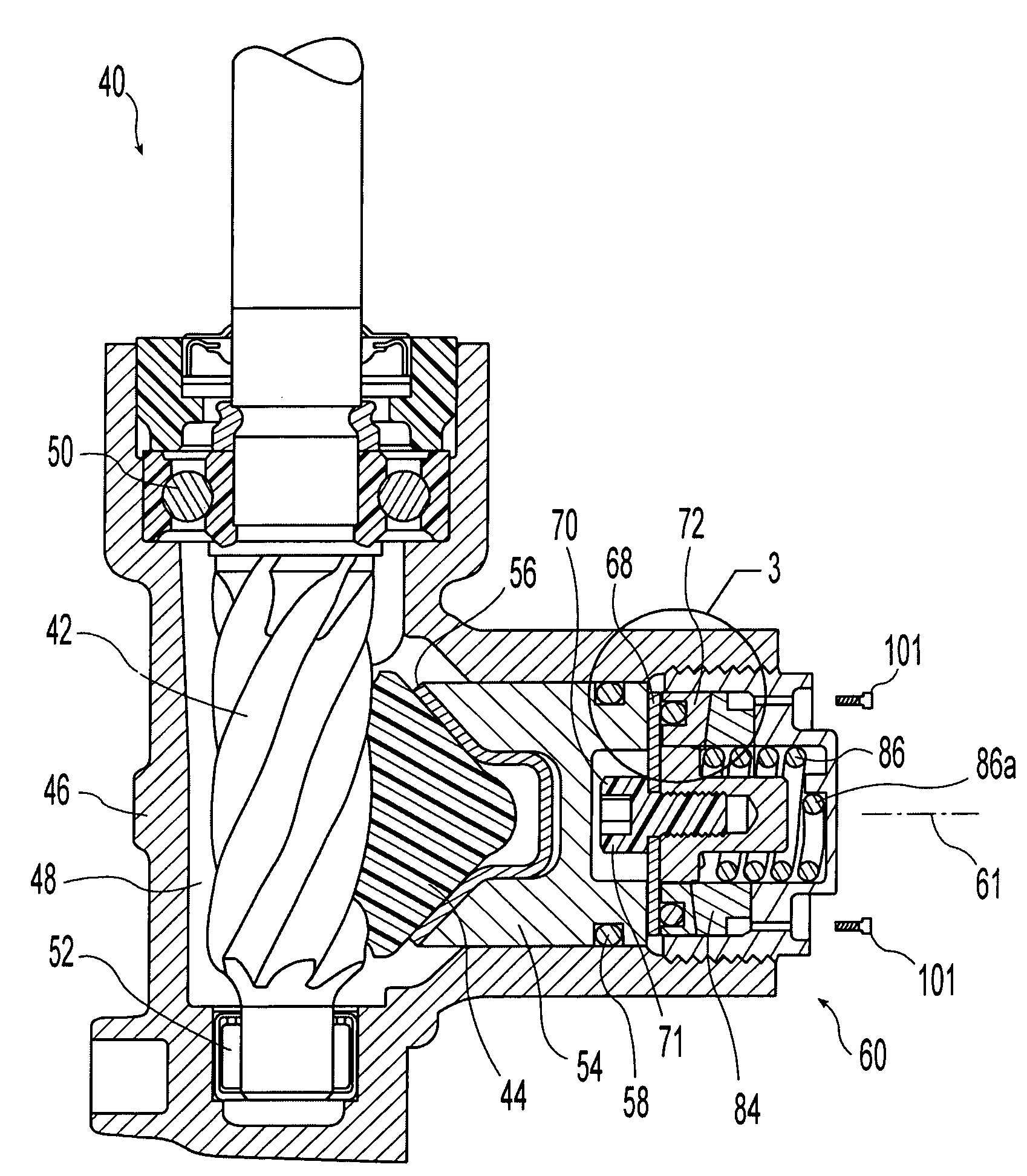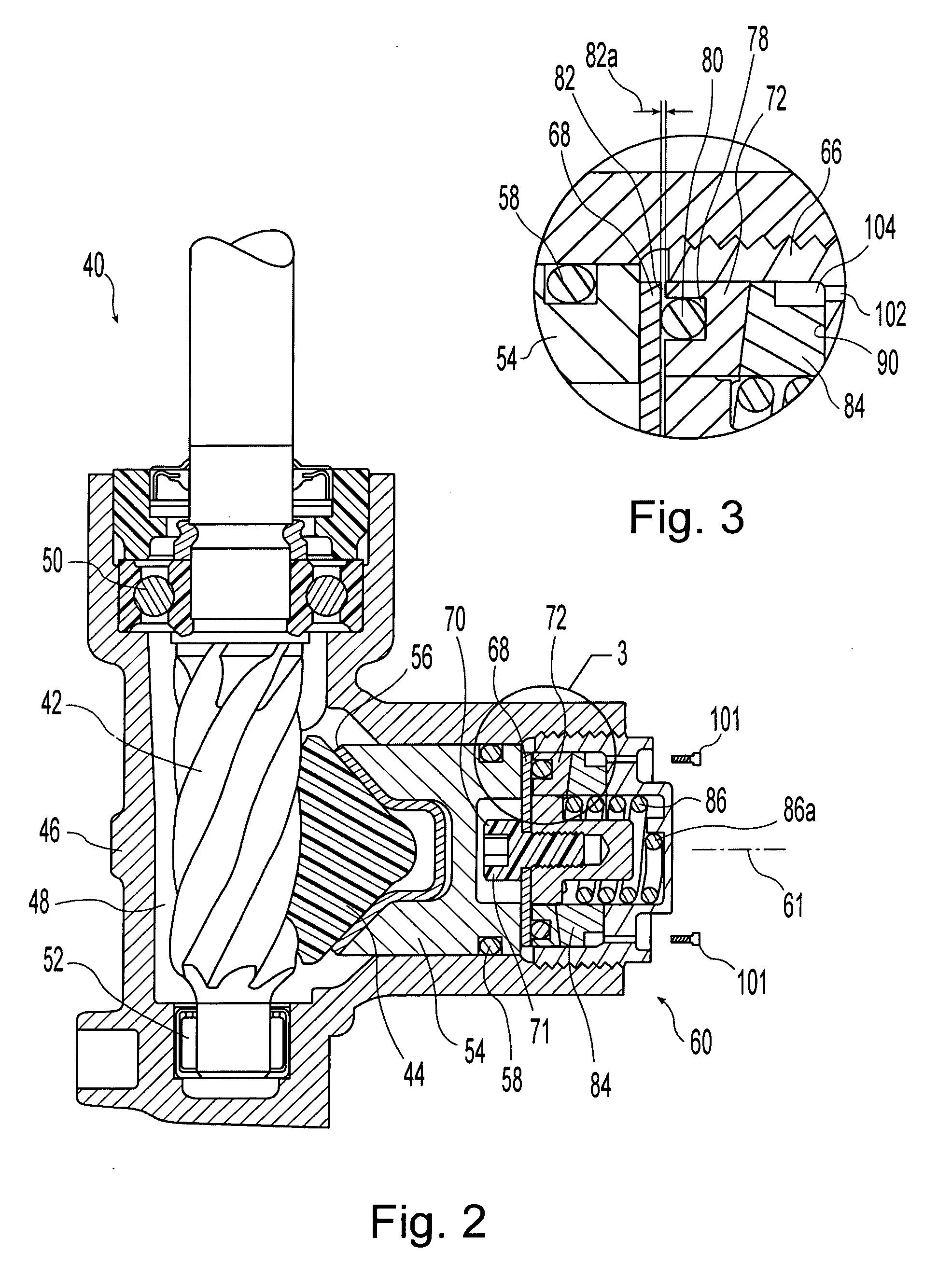Rack and pinion steering gear with self-adjusting rack bearing
a rack bearing and steering gear technology, which is applied in the direction of gears, manufacturing tools, transportation and packaging, etc., can solve the problems of enlarge the mesh clearance between the pinion shaft and the rack, the assembly, including the rack bearing, is also subject to wear over the full life of the steering gear, and the rack and pinion gears are subject to a rapid period of wear
- Summary
- Abstract
- Description
- Claims
- Application Information
AI Technical Summary
Benefits of technology
Problems solved by technology
Method used
Image
Examples
embodiment 140
[0041]Alternative embodiment 140 of a rack and pinion steering gear assembly in accordance with the present invention is illustrated in FIGS. 5 and 6. The pinion shaft 42, rack 44, housing 46 and rack bearing 54 are similar to those employed in steering gear 40, however, biasing assembly 160 does differ from biasing assembly 60 in several aspects which are described in greater detail below. Biasing assembly 160 includes a bearing assembly 162 engaged with rack bearing 54 and exerting a bearing force thereon, an accumulative adjustment assembly 164 to account for the wear of pinion shaft 42 and rack 44 and a gross adjustment member 166.
[0042]As illustrated in FIG. 5, bearing assembly 162 includes a bearing member 168 that is engaged with rack bearing 54, an adjustment member 184 and a biasing member 180 located between bearing member 168 and adjustment member 184. Bearing member 168 and adjustment member 184 each include an annular groove in which biasing member 180 is disposed. In t...
PUM
| Property | Measurement | Unit |
|---|---|---|
| Angle | aaaaa | aaaaa |
| Force | aaaaa | aaaaa |
| Torque | aaaaa | aaaaa |
Abstract
Description
Claims
Application Information
 Login to View More
Login to View More - R&D
- Intellectual Property
- Life Sciences
- Materials
- Tech Scout
- Unparalleled Data Quality
- Higher Quality Content
- 60% Fewer Hallucinations
Browse by: Latest US Patents, China's latest patents, Technical Efficacy Thesaurus, Application Domain, Technology Topic, Popular Technical Reports.
© 2025 PatSnap. All rights reserved.Legal|Privacy policy|Modern Slavery Act Transparency Statement|Sitemap|About US| Contact US: help@patsnap.com



